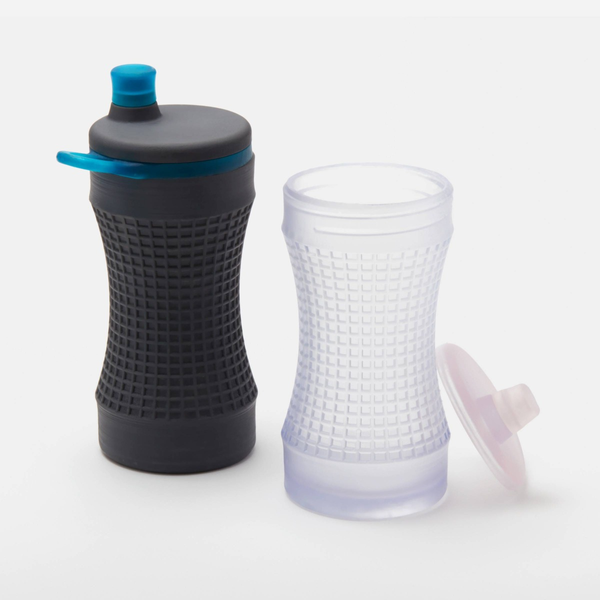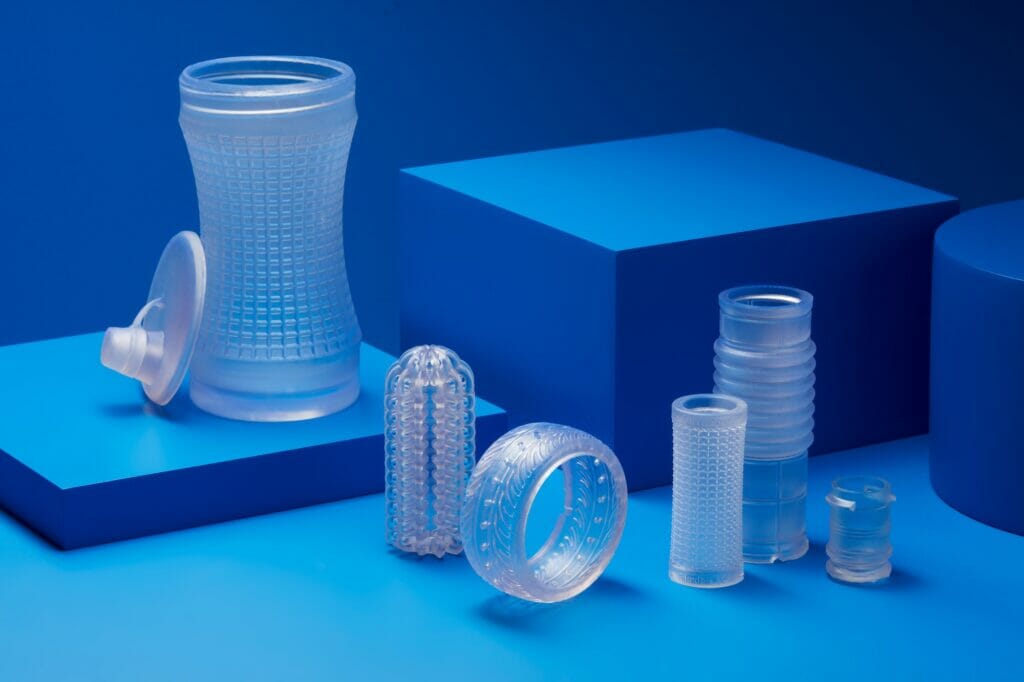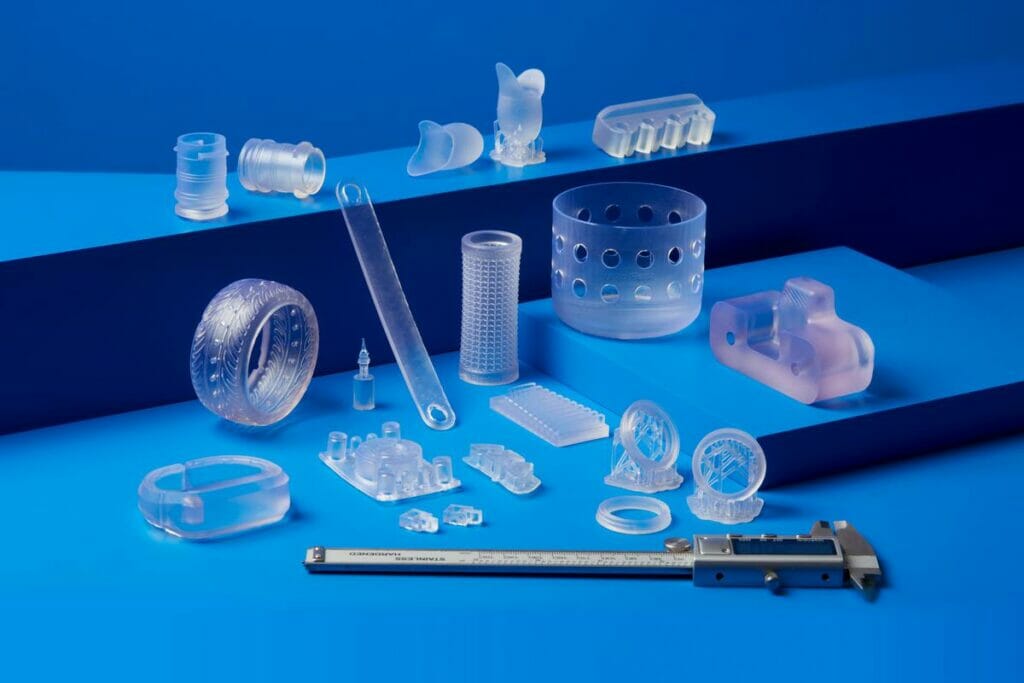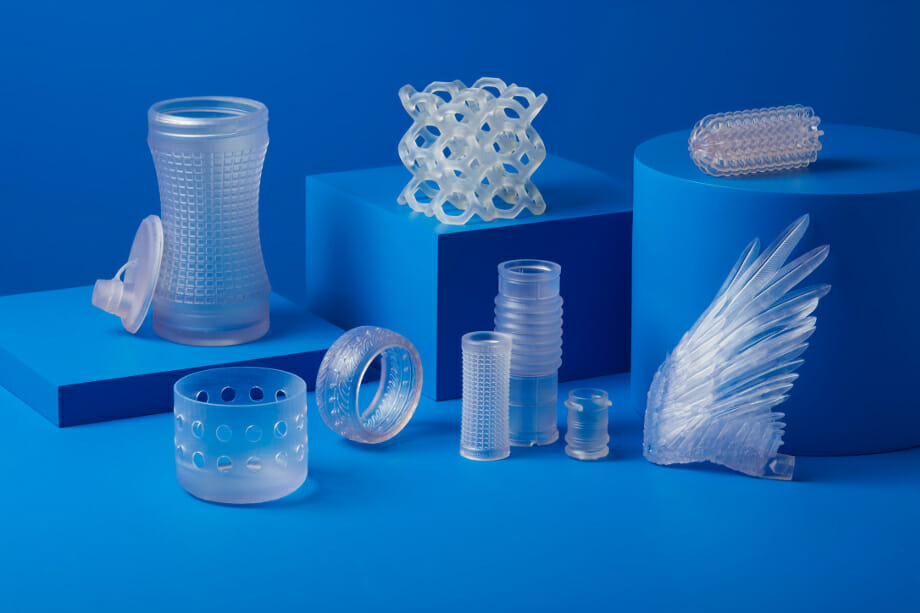Flexible 80A Resin For Hard Flexible Prototypes.
Flexible 80A Resin is the most stiff soft-touch material in our library of Flexible and Elastic Resins, with an 80A Shore durometer to simulate the flexibility of rubber or TPU. Balancing softness with strength, Flexible 80A Resin can withstand bending, flexing, and compression, even through repeated cycles. This material is well suited for cushioning, damping, and shock absorption.
Common Applications:
- Compliant features for robotics.
- Handles, grips, over molds.
- Low quantity production of small parts.
- Cartilage and ligament anatomy.
- Special effects props and models.
- Seals, gaskets, masks.
SLA: Flexible 80A Technical Specifications:
| MATERIAL PROPERTIES DATA | |||
| Metric | ENGLISH | METHOD | |
| Tensile Properties | |||
| Ultimate Tensile Strength | 8.9 MPa | 1290 psi | ASTM D 412-06 (A) |
| Stress at 50% Elongation | 3.1 MPa | 433 psi | ASTM D 412-06 (A) |
| Stress at 100% Elongation | 6.3 MPa | 909 psi | ASTM D 412-06 (A) |
| Elongation at Break | 120% | ASTM D 412-06 (A) | |
| Tear Strength | 24 kN/m | 137 lbf/in | ASTM D 395-03 (B) |
| Shore Hardness | 80 A | 80 A | ASTM 2240 |
| Compression Set (23 °C for 22 hours) | 3% | 3% | ASTM D 624-00 |
| Compression Set (70 °C for 22 hours) | 5% | 5% | ASTM D 395-03 (B) |
SLA: Flexible 80A Solvent Compatibility:
| SOLVENT COMPATIBILITY DATA | |
| Percent weight gain over 24 hours for a printed and post-cured 1 x 1 x 1 cm cube immersed in respective solvent | |
| Solvent | 24 hr weight gain, % |
| Acetic Acid 5% | 0.9 |
| Acetone | 37.4 |
| Bleach ~5% NaOCl | 0.6 |
| Butyl Acetate | 51.4 |
| Diesel Fuel | 2.3 |
| Diethyl glycol Monomethyl Ether | 19.3 |
| Hydraulic Oil | 1.0 |
| Hydrogen peroxide (3%) | 0.7 |
| Isooctane (aka gasoline | 1.6 |
| Isopropyl Alcohol | 11.7 |
| Mineral oil (Light) | 0.1 |
| Mineral oil (Heavy) | <0.1 |
| Salt Water (3.5% NaCl) | 0.5 |
| Skydrol 5 | 10.7 |
| Sodium Hydroxide solution (0.025% PH 10) | 0.6 |
| Strong Acid (HCl conc) | 28.6 |
| Water | 0.7 |
| Xylene | 64.1 |
DOWNLOAD THE FULL MATERIAL DATA SHEET
SLA: Flexible 80A Part Gallery:




